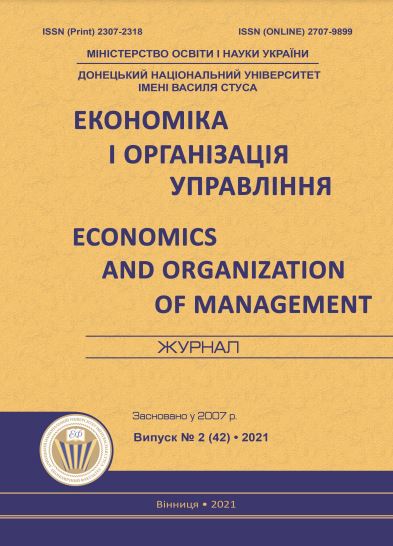Analysis of prevalence of undernourishment as a food security indicator
DOI:
https://doi.org/10.31558/2307-2318.2021.2.10Keywords:
undernourishment; national income; food system; food securityAbstract
The article researches the main aspects and factors of the prevalence of undernourisment in the world as an indicator of the food security system. The dynamics of the prevalence of malnutrition and the number of people suffering from acute food insecurity were analyzed. The prevalence of undernourishment and the number of people suffering from severely food insecurity have been found to have skyrocketed over the past four years. The factors influencing the prevalence of malnutrition and the increase in the number of hungry people are highlighted, among which both political and economic factors and climatic factors can be distinguished, in particular, unfavorable weather conditions, disasters, wars, financial and economic shocks. However, the biggest reason the world's people suffer from hunger, food insecurity and malnutrition is the lack of financial resources to purchase healthy food. In order to analyze the impact of income on the number of hungry people, graphs of the relationship between net national income per capita and the prevalence of undernourishment were determined for each group of countries. According to the graphs and econometric models, it was found that the prevalence of undernourishment decreases as the net national income per capita increases. The only exceptions are countries with an upper middle income level, in which the prevalence of undernourishment is not due to the level of national income, but other factors. Recommendations are given on ways to combat the prevalence of malnutrition as an indicator for assessing the effectiveness of the food security system.
References
Волошко Н.О., Шахова Ю.С. Аналіз рівня продовольчого забезпечення. Світове господарство і міжнародні економічні відносини. 2020. Вип. 50. С. 3-7.
Кравчук Н.І, Антонець Т.Ю, Чаюн В.М. Особливості продовольчого забезпечення сільських територій. Економіка та суспільство. 2021. Вип. 23, https://doi.org/10.32782/2524-0072/2021-23-7.
Раманаускас Ю., Білецька І.І. Моделювання рівня поширеності недоїдання в регіонах та їх продовольча безпека. Вчені записки : зб. наук. пр. / М-во освіти і науки України, ДВНЗ «Київ. нац. екон. ун-т ім. Вадима Гетьмана»; [редкол.: О. Яценко (голов. ред.) та ін.]. Київ: КНЕУ, 2019. Вип. 20. С. 17–29.
Ткачук В.І., Кравчук Н.І., Кільніцька О.С. Соціально-економічні детермінанти продовольчої незахищеності населення. Проблеми економіки. 2019. № 3 (41). С. 263-273.
Шабалина Л.В., Алексеев Н.В. Факторы, влияющие на мировую продовольственную безопасность. Економічний вісник Донбасу. 2019. № 1 (55). С.79-86.
FAO, IFAD, UNICEF, WFP and WHO. 2020. The State of Food Security and Nutrition in the World 2020. Transforming food systems for affordable healthy diets. Rome, FAO. http://www.fao.org/documents/card/en/c/ca9692en

